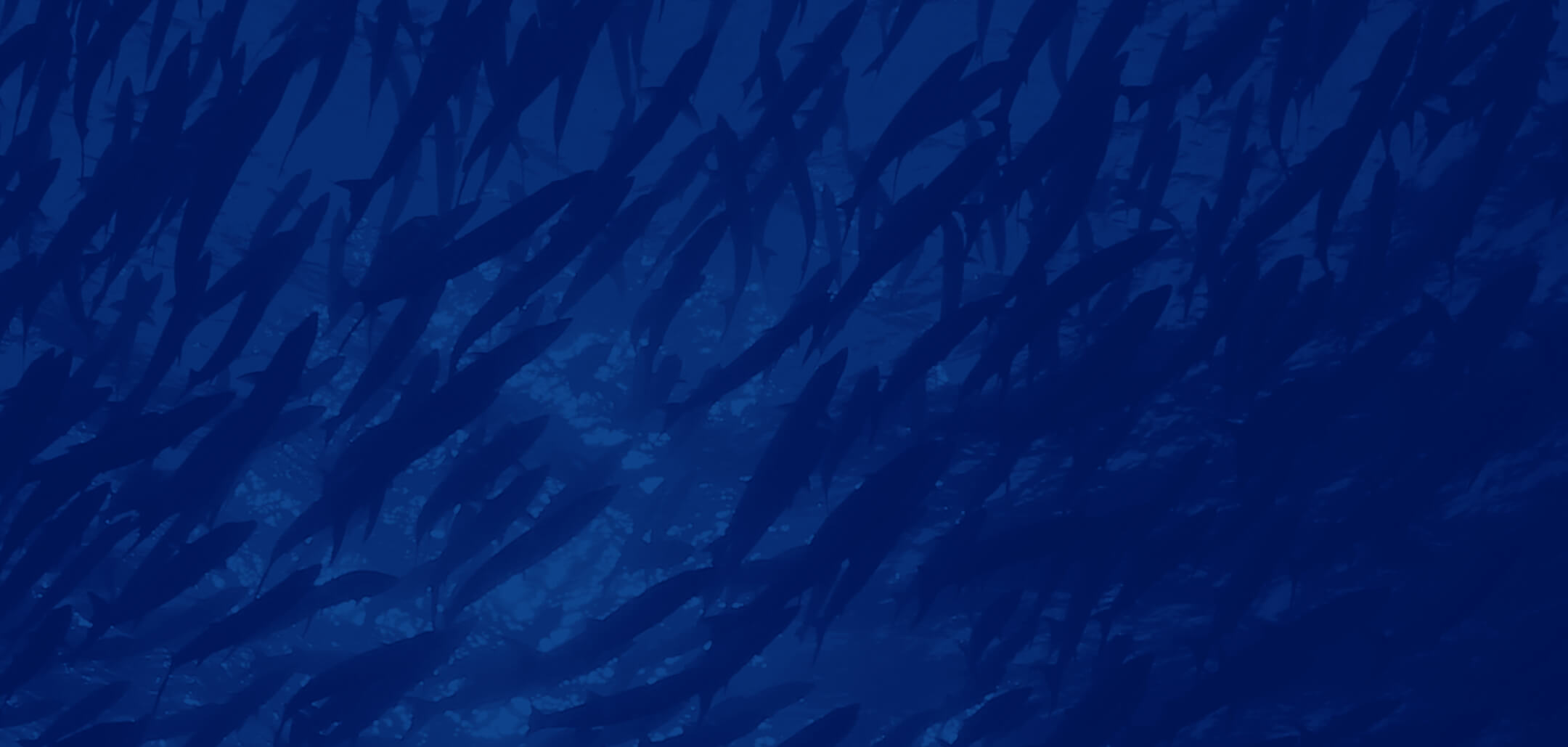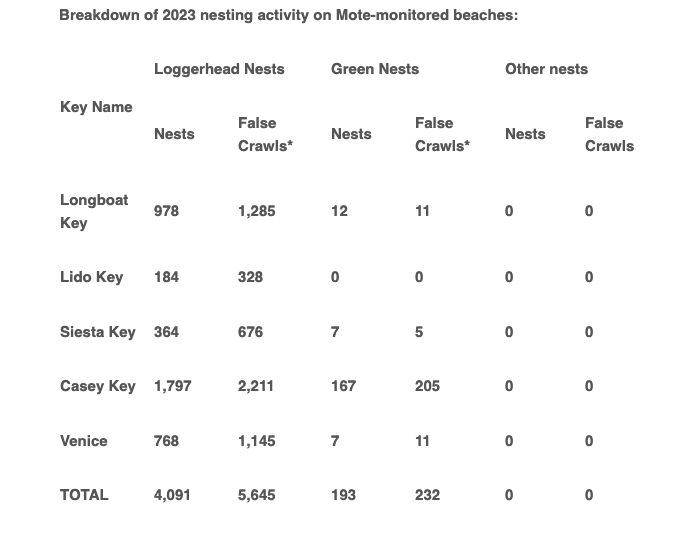As sea turtle nesting season has officially concluded on Florida’s Southwest coast as of Oct. 31, Mote’s Sea Turtle Conservation & Research Program (STCRP), which patrols 35-miles from Longboat Key to Venice of beaches each day of nesting season (May 1-Oct. 31) reports their findings for another record-breaking nesting season.
Throughout the season, STCRP recorded a total of 4,284 (compared to the current record of 5,112 in 2019) nests across all sea turtle species—4,091 loggerhead nests and 193 green nests. The program also documented the highest numbers of sea turtle nests specifically, the highest number of green turtle nests ever on Venice.
Even though Hurricane Idalia impacted beaches towards the end of the season, its impact on nesting was low with 75% of nests completing their incubation prior to the storm’s arrival. The majority of the remaining nests were washed out by the storm, however, sea turtles have a natural instinct to nest several times in one season offsetting natural events.
The success of recent nesting seasons could be a result of the long-standing program and local engagement, giving the next generation of sea turtles a better chance.
“Science-based sea turtle conservation is critical for maintaining endangered and threatened species populations,” said Dr. Michael P. Crosby, Mote President & CEO. “Mote translates and transfers the interwoven science of our Sea Turtle Conservation and Research program, Sea Turtle Rehabilitation Hospital and Strandings Investigations Research program to protect and rehabilitate these animals and their habitats. An example of a highly visible outcome of our work is the recently established voluntary Sea Turtle Protection Zone for boaters in our local waters.”
Senior Biologist and Conservation Manager Melissa Macksey is thrilled to see these numbers continue to rise and is excited to see a growth in these sea turtle species populations. In particular, green sea turtle nesting numbers which have dramatically increased in the last decade. This species recovery in the Gulf of Mexico shows conservation efforts are working and should be maintained.
“This year’s total is the 5th highest overall since our program began 42 years ago,” said Mote Senior Biologist Melissa Macksey. “Over decades, we have learned and are still learning a great deal about the nesting behaviors of sea turtles individually and at the population level, impacts of human activity and animal predators, sea turtle population trends, and more.”
At night, STCRP staff have expanded tagging of nesting sea turtles to three beaches in Sarasota County: Siesta Key, Casey Key, and Venice. This year STCRP encountered the highest number of individuals (528) ever! Researchers identify unique turtles through flipper tags and use these data to answer questions about their behavior.
According to a recent study titled Forty years of monitoring increasing sea turtle relative abundance in the Gulf of Mexico in the scientific journal, Scientific Reports, Mote’s STCRP documented 133,957 sea turtle crawls from 1982 to 2021; 48.8% of these crawls resulted in nests (65,321). Of those, 99.0% (64,692) were laid by loggerheads. There were 608 green sea turtle nests, ten Kemp’s ridley nests, five leatherback nests and two known loggerhead/hawksbill hybrid nests. These findings can be used to determine how nesting counts and hatchling productions have changed over time and to quantify how nesting turtles on these beaches are contributing to the greater Gulf of Mexico marine turtle populations.
Mote’s STCRP contributes all of its data to a statewide cooperative effort to monitor sea turtle nesting, coordinated by the Florida Fish & Wildlife Conservation Commission (FWC).
*A false crawl occurs when a sea turtle emerges to nest but returns to sea without depositing eggs.
*Mote’s sea turtle activities are conducted under Florida Fish and Wildlife Conservation Commission Marine Turtle Permits 027, 028, 048, 054, 070, 126, 216, and 226.



